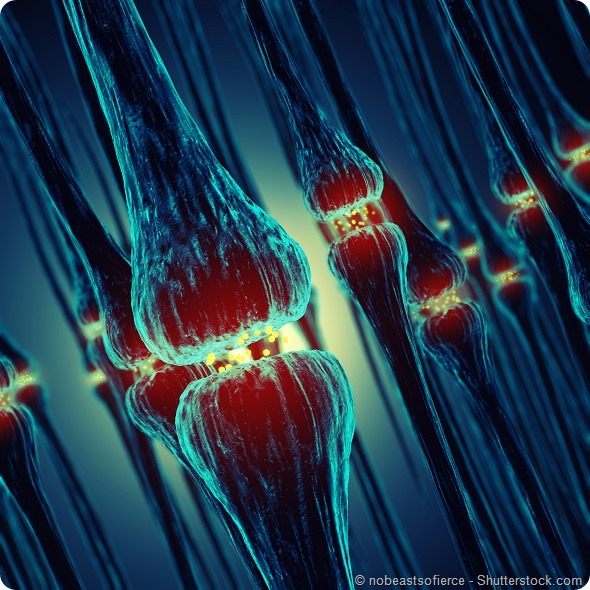Is it true that scientists still don’t understand why we need to sleep every night?
Yes – it is true that we still do not know why we need to sleep every night. Sleep is essential for health. We have to do it every day. But nobody yet knows why. This fact amazes me.

How much was previously known about the chemical histamine and the role it plays in controlling sleep and wakefulness?
Histamine was first discovered by Sir Henry Dale around the beginning of the 20th Century. He isolated it from a mould, ergot. It was found quite early on that histamine stimulated acid secretion from the stomach and that it was involved in allergic responses.
Later, Sir James Black contributed to much of our knowledge about histamine in the peripheral organs and he and his colleagues helped develop drugs which block histamine receptors to treat allergy and excess acid secretion.
Histamine in the brain was discovered much later in the mid-1970s by Prof. Jean-Charles Schwartz and colleagues (1975). At first it was not clear why histamine was in the brain. But it gradually became clear that histamine is actually a wake-promoting substance. People first realized this when it was noted that “anti-histamines” to treat allergy also induced drowsiness.
Many other scientists such as H. Haas, P. Panula, Lin, T. Watanabe and H. Wada and their colleagues then elaborated how histamine sustains wakefulness in the brain.
C. Saper and colleagues proposed that histamine is part of a general arousal circuitry in the brain, and that during sleep the histamine neurons are actively switched off during sleep, and switch on again just after we wake up.
The histamine, released into the neocortex and other brain areas, makes neuronal networks function more efficiently i.e. makes us feel awake. Our work naturally builds on this mountain of labour by the other scientists.
Why did your recent research look at the chemical GABA?
It had been known for a long time from studies by Watanabe and colleagues that histamine neurons also stained for the chemical GABA. GABA is the main “no signal” in the brain; the main inhibitory neurotransmitter.
Nobody had tried to find out why it was there in histamine neurons, its presence did not seem to make any sense, and it was rather forgotten about. The histamine field tended to ignore it.
A talented Chinese PhD student in our lab, Xaio Yu, wanted to find out why GABA was there. So he made mice using genetics whose histamine neurons had lost the ability to secrete GABA but could still secrete histamine.

What were the main findings of your research?
We found that the mice whose histamine neurons could no longer release GABA but only histamine were hyperactive. Compared with normal mice, those without GABA ran twice as far and twice as fast, and maintained or even increased their overall activity over a 30 minute period.
The mice also stayed awake much longer in the day, when they would otherwise be asleep. When they did sleep, the mice experienced just 65 per cent of the normal amount of non-REM (Rapid Eye Movement) sleep, a heavy sleep state with no dreaming.
Our research suggests that the chemical GABA acts against histamine, like a chemical 'brake' preventing wakefulness being too intense.
Were you surprised to find that GABA acts against histamine?
No – not surprised – but we were amazed at the hyperactivity of the mice.
How did the mice without GABA cope with sleep deprivation?
This is what we are trying to find out now. That is a fascinating question. The mice just seem to sleep less. We don’t know yet how this will affect the body physiology of the mice.
What impact will your research have on the understanding of why we sleep?
Understanding why we sleep is the big question in the field. This is what everyone would like to know. But we think our discovery could help researchers to develop new drugs that promote better sleep, or control hyperactivity in people with the medical condition mania.
Do you think it will ever be possible to reduce the amount of time we need to sleep or stop the need to sleep altogether?
It is a fascinating question. This is really related to why we have to sleep in the first place. If we knew why we had to sleep we could understand why we cannot go without it or how to go without it.
I always find falling asleep a very pleasant feeling; and also waking up slowly. But being asleep does seem to waste a lot of time. I myself need seven or eight hours. There are so many things to do, but tiredness gets in the way, and I have to go to sleep instead.
I would like to feel fresh and just get by with no sleep, but of course this is impossible. I guess sleep is something we will always have to live with.
Can you please give an insight into your new work on investigating the link between lack of sleep and memory loss?
It seems we need to sleep to enable memories to be better processed. This is something that has been worked on extensively by Jan Born and colleagues in Germany. We are currently studying if our hyperactive mice are worse or better at making new memories.
Where can readers find more information?
The work was a collaborative effort between the groups of three PIs: Dr Stephen Brickley (Imperial), Prof. Nick Franks (Imperial) and Prof. William Wisden (Imperial). Their web pages are:
Our paper, Wakefulness Is Governed by GABA and Histamine Co-transmission, is published in Neuron and is free on the web at: http://www.ncbi.nlm.nih.gov/pubmed/26094607
(Yu X et al., 2015 Neuron 87:164)
About Professor Wisden
Until the 1980s, our knowledge of where in the brain many neurotransmitter receptors and ion channels were anatomically located was unknown; this was the context for my PhD work. At the time, few neurotransmitter receptor genes were cloned, and the appropriate techniques to study their expression were still under development.
In Stephen Hunt’s laboratory at the MRC Molecular Neurobiology Unit in Cambridge, I developed and applied molecular anatomical methods, such as the then novel in situ hybridization technique, to determine how patterns of neural gene expression change in response to physiological stimuli. Together with Brian J. Morris, I greatly improved a version of the in situ hybridization method so that it became accessible for many laboratories.
Probably my most influential study from the time in Steve Hunt’s lab was showing, in collaboration with Tim Bliss and colleagues, that immediate early genes, such as c-fos, were induced by patterns of neural stimuli that might produce memories.
I then joined Peter Seeburg at the University of Heidleberg, Germany and moved from molecular anatomy to molecular cloning. At that time, several receptor cDNAs had been cloned, but these did not explain the pharmacological diversity found in the brain. Were there more receptors?
In Seeburg's lab, I helped elucidate the large genetic diversity of the brain’s most important receptors for inhibitory and excitatory neurotransmission: I helped discover and characterize many of the GABA-A receptor subunit genes and most of the ionotropic glutamate AMPA and kainate receptor genes.
In three landmark papers, I demonstrated that the diversity of channel gene expression patterns in the brain implied combinatorial assemblies of GABA-A receptor subunits.
At the MRC LMB in Cambridge in the mid-1990s, I produced some of the first mouse knockout studies on GABA-A receptor genes. The aim was to understand how the brain uses this inhibitory diversity. My colleagues and collaborators (Stephen Brickley, Mark Farrant) and I found a particular subtype of GABA-A receptor specialized for extrasynaptic transmission.
I have since become interested in developing genetic methods that would reveal how neuronal microcircuits function. I invented, together with my colleagues P. Somogyi, E. Korpi and W. Sieghart, one of the first pharmacogenetic methods that allowed rapid and reversible modulation of defined GABAergic synapses in vivo.
I have also made neuronal cell-type selective impairments of GABA-A receptors to investigate how fast inhibition contributes to memory formation and network properties.
My laboratory has used genetic silencing to investigate how inhibitory interneurons contribute to working memory formation.
In the last five years, I changed fields within neuroscience, and I became interested in sleep and circadian rhythms. I moved to Imperial College London in 2009 and merged my laboratory with those of Stephen Brickley and Nick Franks. Each of us contributes different skill sets which are needed to tackle the complex multidimensional problem of sleep.
With Mick Hastings at the MRC LMB, Nick Franks and I demonstrated how local clocks in histaminergic neurons interact with the sleep-wake cycle.
Most recently, we have used mouse genetics to investigate how inhibition regulates the sleep-wake circuitry and the actions of sedative drugs, and have deployed TetTagging for tracing and probing ensembles of neurons activated during sleep and by sedative drugs.
Again working with Stephen Brickley and Nick Franks, we have recently used mouse genetics to study the co-release of histamine and GABA and how this regulates sleep. Together with Nick Franks, I have just received a Wellcome Trust Investigator Award (starting October 2015) to study sleep circuitry.